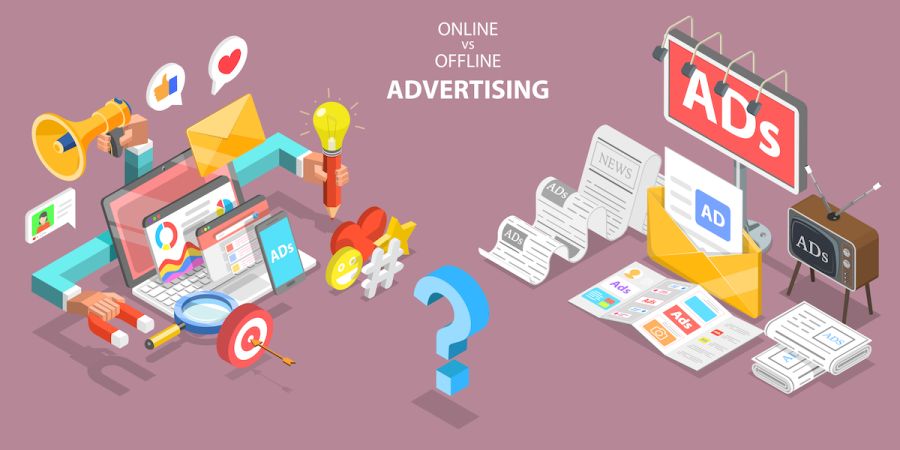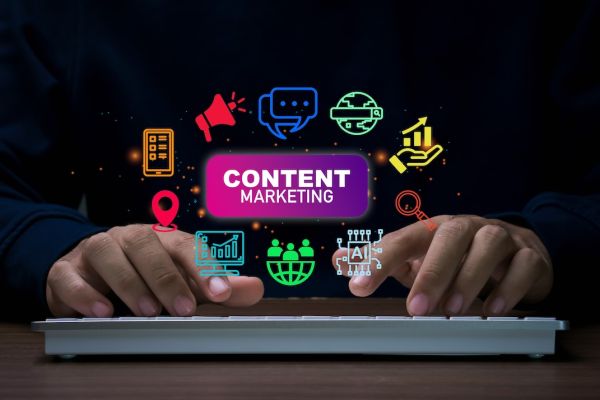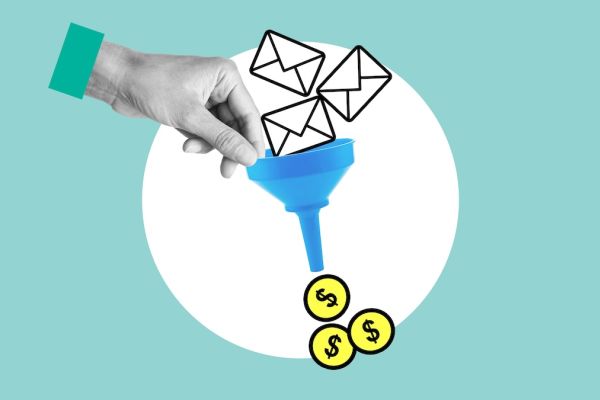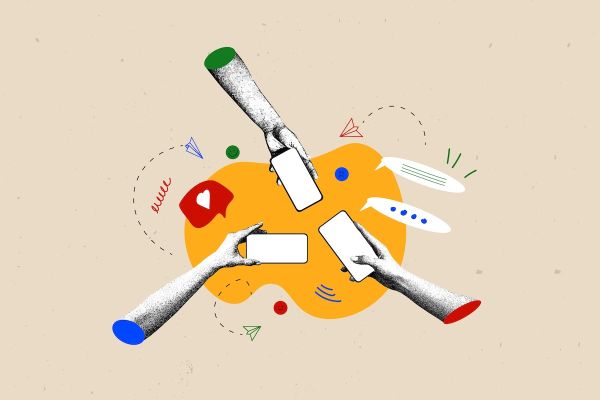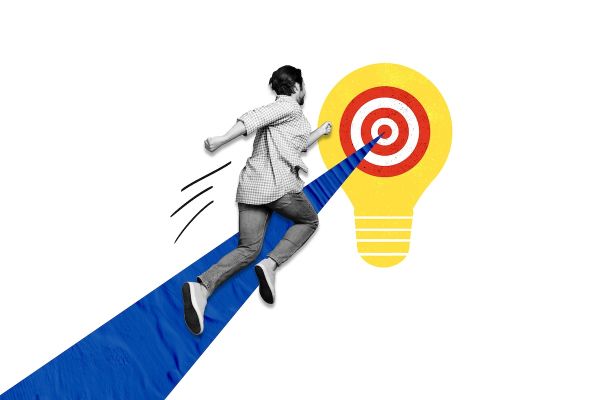Online advertising: get it right!
Online advertising: many people think it's the future, but they're wrong - it's now the reality of the present. You could say you are missing out if you are left behind and don't take advantage of the many opportunities this digital tool offers. Advertising tools are diverse and lifelong learning in this field is guaranteed. But how is online advertising different from its older brother, offline advertising? What capabilities do older types of advertising have that make them less effective? Our blog article explores these questions and the answers.
Offline advertising
THE PRESS RELEASE
THE HIGHLIGHTS
THE RADIO RECORD
THE TV AD
The disadvantages of offline advertising
In the beginning was the WWW
The latest history of advertising was started by the graphic representation of the internet, and it is being written ever since. Around 1993, the World Wide Web broke out of the previously dull world of research institutes and, as the saying goes, was waiting in a colour-rich robe to connect the world.
It was soon decided what its advertising model would be: the banner appeared for the first time in 1994. This first online ad in the form of a strip was created for the legendary Wired (then Hotwired) magazine, and users clicked on the never-before-seen graphic almost mindlessly.
Observe and measure
- unlike physics, the ‘cost of entry’ has become cheaper,
- it was faster to put together and publish an online ad,
- it became easier to change ads even within a day,
- A/B tests could be used to assess which ads were more effective,
- new digital formats could be introduced (webisodes, special films, layered pop-ups, etc.).
This brings us to the specialisation of online advertising, brought about by the digital technology revolution and the start-up world. But which platforms, channels and tools are we talking about?
Online advertising
WHEN AN ADVERTISER USES THE INTERNET TO GET THEIR MESSAGE ACROSS, IT'S AN ONLINE MARKETING TOOL, ONLINE ADVERTISING.
Google Ads
The Great Search War ended with the launch of Google in 1998. Who remembers the names Altavista or Lycos? Google's search engine gave users more useful and more numerous results than ever before. The relatively young company soon found out that it was possible to place advertisements on their website in place of the results, matching the search queries.
The sponsored content is displayed according to an algorithm that ranks and displays ads related to keywords entered in a search. The final ranking is decided in a lightning-fast, automated online auction at the moment of the search.
Ads are ranked according to a wide range of factors, including budget, relevance and landing page quality. Google Ads currently has no serious global competitors, except in two markets where it is not the market leader.
Founded in 2004, Facebook has successfully broken into a segment where previous competitors have faltered. Before that, MySpace had gained relative prominence, but Facebook took it all: users, advertising, global interest and engagement.
Like Google Ads, the Mark Zuckerberg-branded business enables highly precise targeting, aided by the ongoing collection and processing of user data based on consent. Targeting by categories such as gender, interests, age or location makes it particularly inescapable. A popular product is the Messenger messaging service, which now also accepts ads.
ONLY FACEBOOK?
Meta acquired the then two-year-old platform in 2012. Instagram is a platform for uploading images and videos - and the online ads that run on it follow the same recipe. Following the example of one of its smaller competitors, Snap, users have the option to use so-called Stories, a self-destructing stream of related images and photos within 24 hours. This was later adopted by Facebook, where ads can also be displayed.
Adverts in more visual industries (e.g. fashion, gastronomy, etc.) can be well targeted here, making them highly cost-effective. Instagram is therefore an excellent platform for branding.
YouTube
In 2006, when YouTube was just a year and a half old, it was bought by Google for a hefty sum. The move was worth it: today, YouTube is almost the world's unofficial interactive TV channel. With its huge user base and its triumph of video-movie culture, YouTube is a popular online advertising tool. Ads appear for 5 to 15 seconds before a video is started, so that you have to watch them all the way through. The trick to this form of advertising, called preroll, is to make the first few seconds exciting, as this is the only way viewers will let the ad continue.
Waze
TikTok
Chinese company Bytedance's app is well on its way to becoming the world's most popular interface and software. Its huge advantage is that it is easy to use and its algorithm rewards its users better than even Facebook or Instagram.
The platform, which typically features masses of shorter, 30-60 second uploaded videos, is in line with the media consumption habits of our time: we see videos, short, almost endless, and entertaining. Unlike YouTube, the screen here is vertical, not horizontal: so creatives designed for essentially flat, longitudinal screens (TV, cinema) need to be rethought.
If you're curious about the mysteries of TikTok advertising, you can read about it here.
SEO
As we have seen, a company's communication fate is greatly influenced by how it performs in Google search. Experience has shown that only a fraction of users are willing to look at the second results page. For this reason, it is in the interest of every business to have its website ranked as high as possible in organic (non-paid) search results for the words and phrases that are relevant to it. In order for a website to rank well on search results pages, it needs to be ‘adapted’ to Google's algorithms.











